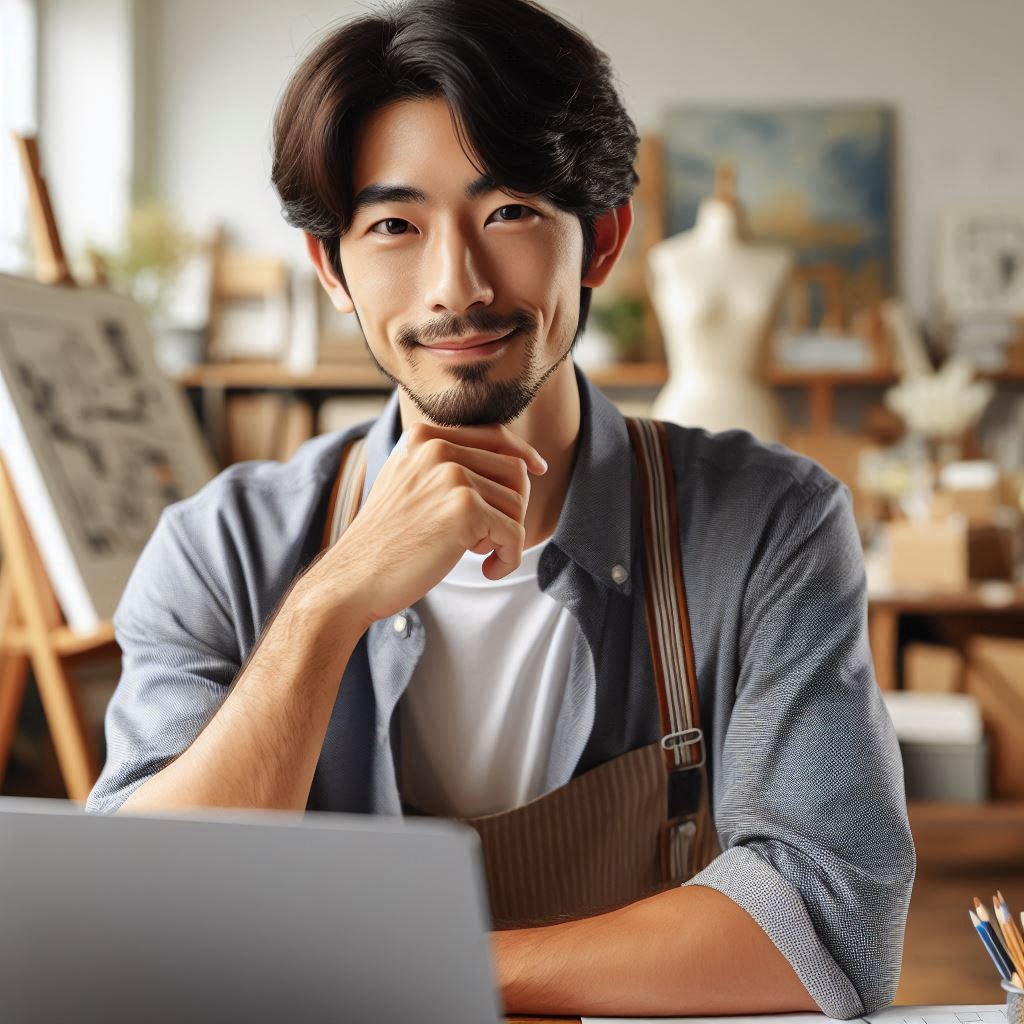Introduction
Continuing education for art teachers is essential for their growth and development in the field.
Professional development and ongoing learning are crucial for educators to stay current and enhance their teaching practices.
For art teachers, continuing education offers specific benefits that can positively impact their students and overall classroom environment.
Continuing education allows art teachers to learn new techniques, methods, and trends in the art world.
By staying updated, they can bring fresh and innovative ideas to their classrooms, inspiring students to explore and create art in new ways.
Art teachers can benefit from continuing education by expanding their own creativity.
Engaging in workshops, classes, and seminars can ignite their passion for art and help them develop their own artistic skills, which can be translated into more engaging lessons for their students.
Attending conferences and professional development events through continuing education programs provides art teachers with opportunities to network with other professionals in the field.
This networking can lead to collaborations, mentorship, and a supportive community that can help them grow as educators.
By continuously learning and improving their teaching skills, art teachers can ultimately enhance student outcomes.
Engaging in continuing education can lead to more effective teaching strategies, increased student engagement, and ultimately, better student achievement in the art classroom.
Continuing education plays a vital role in the overall professional growth of art teachers.
It allows them to stay motivated, passionate, and committed to their practice, ultimately benefitting both themselves and their students.
Enhanced Teaching Skills
Continuing education allows art teachers to learn new teaching strategies and techniques
Continuing education is essential for art teachers as it offers numerous benefits that can greatly enhance their teaching skills.
Art educators enhance their skills through ongoing professional development.
They learn new teaching strategies and techniques to improve engagement.
These tools help educators connect more effectively with students.
By applying these methods, they create a more dynamic learning environment.
Helps art teachers stay updated with the latest trends and innovations in art education
Art teachers must stay updated on the latest trends and innovations.
This helps them provide students with a well-rounded education.
Transform Your Career Today
Unlock a personalized career strategy that drives real results. Get tailored advice and a roadmap designed just for you.
Start NowStaying informed prepares students for the constantly changing art world.
By doing so, teachers ensure they offer relevant lessons.
The evolving art industry requires constant adaptation in education.
Staying current equips students with valuable skills for success.
Continuing education allows teachers to stay current with emerging technologies, art movements, and teaching methods, ultimately enriching their curriculum and expanding their students’ learning experiences.
Provides opportunities to enhance classroom management skills and student engagement
Additionally, continuing education provides art teachers with opportunities to enhance their classroom management skills and student engagement.
By attending workshops, conferences, and courses, teachers can learn effective classroom management strategies that promote a positive learning environment and enable students to thrive.
Furthermore, professional development opportunities allow teachers to discover new ways to engage students, spark creativity, and cultivate a love for the arts.
In fact, continuing education is essential for art teachers as it equips them with the tools, knowledge, and skills needed to enhance their teaching practices, stay current with industry trends, and create engaging learning environments for their students.
By investing in ongoing professional development, art teachers can ensure that they are providing quality education and preparing students for success in the art world and beyond.
Read: Effective Classroom Management for Art Instructors
Professional Growth
Continuing education contributes to the professional growth and development of art teachers
Continuing education plays a crucial role in the professional growth of art teachers.
By participating in workshops, seminars, and courses, educators can stay informed about the latest trends and developments in the field of art education.
These opportunities provide art teachers with the chance to enhance their teaching techniques, experiment with new art mediums, and explore innovative approaches to instruction.
As a result, educators can bring fresh ideas and perspectives to their classrooms, benefiting both themselves and their students.
Enables art teachers to expand their knowledge and expertise in their field
Moreover, continuing education helps art teachers maintain their passion for teaching.
By staying engaged with ongoing learning opportunities, educators can reignite their enthusiasm for their work and reignite their creativity.
This renewed energy can have a positive impact on students, creating a more inspiring and dynamic learning environment.
Enhances credibility and reputation within the art education community
Additionally, participating in continuing education programs can contribute to a teacher’s overall job satisfaction.
By investing in their professional development, educators demonstrate their commitment to excellence in the field of art education.
Transform Your Career Today
Unlock a personalized career strategy that drives real results. Get tailored advice and a roadmap designed just for you.
Start NowThis dedication can lead to greater job fulfillment, as teachers see the positive effects of their continued learning reflected in their students’ growth and achievements.
Furthermore, continuing education can open up new opportunities for advancement within the field of art education.
By expanding their knowledge and skills, art teachers can position themselves as experts in their field, increasing their chances of receiving promotions, raises, or special assignments.
This professional growth can lead to increased job security and long-term career success.
Overall, continuing education is essential for art teachers looking to expand their professional horizons, enhance their teaching practice, and stay current in the ever-evolving field of art education.
By investing in ongoing learning opportunities, educators can experience personal growth, career advancement, and increased job satisfaction, ultimately benefiting both themselves and their students.
Read: Understanding Color Theory in Digital Art

Networking Opportunities
Continuing education programs offer art teachers the chance to connect with other professionals in the field
Networking is a key aspect of any profession, and art teaching is no exception.
By participating in continuing education programs, art teachers have the opportunity to connect with other professionals in the field.
These networking opportunities allow for collaboration and the sharing of ideas with colleagues, which can lead to new insights and perspectives on teaching methods and approaches.
Builds a supportive network of peers that can offer guidance and support
Building a supportive network of peers is invaluable for art teachers.
This network can offer guidance, support, and motivation during challenging times in the classroom.
Whether it’s seeking advice on a particular lesson plan or simply venting frustrations, having a group of fellow teachers to turn to can make a significant difference in an art teacher’s professional development.
Read: Top Conferences for Art and Design Educators
Career Advancement
Continuing education can lead to career advancement opportunities for art teachers
Art teachers who pursue continuing education often find themselves in a better position for career advancement.
By staying updated on the latest trends, techniques, and technologies in the field, they demonstrate a willingness to grow and evolve in their profession.
This commitment to ongoing learning is highly valued by educational institutions looking to promote teachers to higher-level positions or leadership roles.
Demonstrates a commitment to ongoing learning and professional development
When art teachers engage in continuing education, they not only expand their knowledge and skills but also show dedication to their craft.
This dedication is recognized by administrators and colleagues, opening up opportunities for career progression within the school or district.
By taking the initiative to pursue further education, art teachers position themselves for growth and advancement in their careers.
Transform Your Career Today
Unlock a personalized career strategy that drives real results. Get tailored advice and a roadmap designed just for you.
Start NowRead: Impact of Art Education on Student Development
Increased Creativity
Continuing education fosters creativity and innovation in art teachers
Continuing education is a vital component in the professional development of art teachers.
One of the significant benefits of continuing education for art educators is the increased creativity it fosters.
Through ongoing learning opportunities, art teachers are exposed to new ideas, techniques, and approaches that inspire innovation in their teaching practices.
Exposes art teachers to new perspectives and approaches in art education
By engaging in workshops, seminars, and courses, art teachers can expand their creative horizons and explore innovative ways to incorporate art into their curriculum.
This exposure to new perspectives and approaches in art education challenges art teachers to think outside the box and push the boundaries of their creative abilities.
Encourages experimentation and exploration of different artistic techniques
In addition, continuing education encourages art educators to experiment with different artistic techniques and styles.
This hands-on approach to learning allows art teachers to explore new mediums, tools, and processes, leading to a richer and more diverse range of artistic experiences for both themselves and their students.
Overall, increased creativity is a key benefit of continuing education for art teachers.
By staying current with the latest trends and developments in the art world, art teachers can continue to inspire and engage their students with fresh and innovative teaching methods.
Learn More: Trends in Landscape Art and Design for Public Spaces
Discover More: Top Design Software for Furniture Designers
Personal Fulfillment
Continuing education can bring a sense of personal fulfillment and satisfaction to art teachers
Professional development provides art teachers with opportunities to grow both personally and professionally.
It allows them to engage in lifelong learning and stay current with the latest trends and developments in the field of art education.
For many art teachers, continuing education is not just a requirement for maintaining their teaching certification; it is a way to pursue their passion for art and education.
By participating in workshops, seminars, and courses, art teachers can expand their knowledge and skills, and gain a deeper understanding of different art forms and techniques.
Allows for self-improvement and self-discovery
Moreover, continuing education can bring a sense of personal fulfillment and satisfaction to art teachers.
It allows them to challenge themselves, set new goals, and take risks in their teaching practice.
This process of self-improvement and self-discovery can be incredibly rewarding and empowering for art teachers.
Enhances passion and enthusiasm for teaching art to students
Furthermore, by staying informed and up-to-date with the latest advancements in art education, art teachers can enhance their passion and enthusiasm for teaching.
Transform Your Career Today
Unlock a personalized career strategy that drives real results. Get tailored advice and a roadmap designed just for you.
Start NowThey can bring fresh ideas, perspectives, and approaches to their classrooms, which can benefit their students and create a more dynamic and engaging learning environment.
In general, personal fulfillment is a significant benefit of professional development for art educators.
It not only allows them to improve their teaching practice but also helps them stay motivated, inspired, and dedicated to their craft.
By investing in their own professional development, art teachers can continuously strive for excellence and make a positive impact on the lives of their students.
Discover More: Networking Tips for Lighting Design Professionals
Conclusion
Continuous learning keeps art teachers updated with latest trends and techniques.
Attending workshops and conferences enhance their teaching skills and creativity.
Networking with other educators helps in sharing ideas and gaining inspiration.
Learning new methods can reignite passion and motivation in the classroom.
Improving skills can lead to better student engagement and performance.
Professional development for art educators is essential for professional growth.
It provides opportunities to stay current, improve teaching practices, and inspire students.
Art teachers should actively seek out development opportunities to make a positive impact.
[E-Books for Sale]
The Big Book of 500 High-Paying Jobs in America: Unlock Your Earning Potential
$19.99 • 500 High-Paying Jobs • 330 pages
Explore 500 high-paying jobs in America and learn how to boost your career, earn more, and achieve success!
See All 500 High-Paying Jobs of this E-Book
1001 Professions Without a Degree: High-Paying American Jobs You Can Start Now
$19.99 • 1001 Professions Without a Degree • 174 pages
Discover 1001 high-paying jobs without a degree! Unlock career tips, skills, and success strategies for just $19.99!




